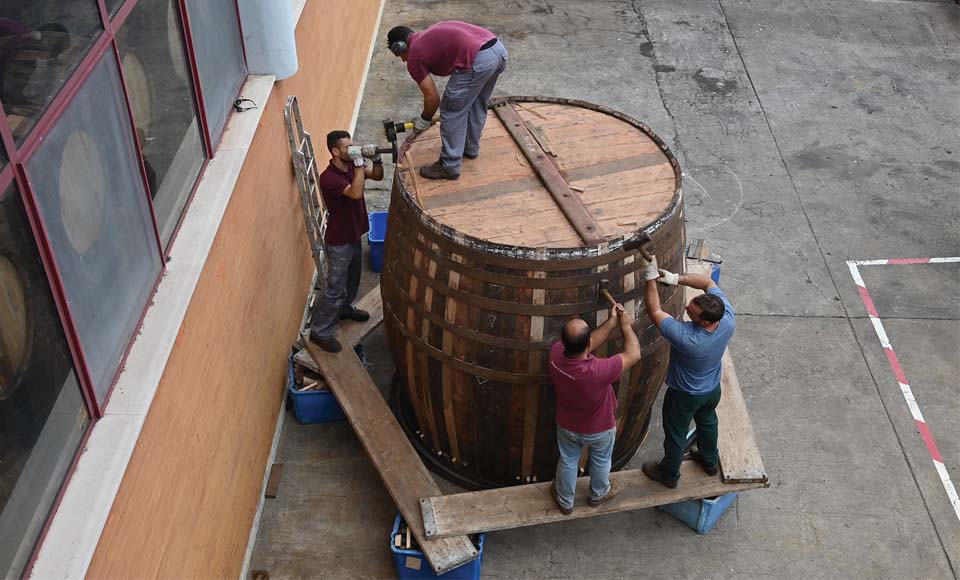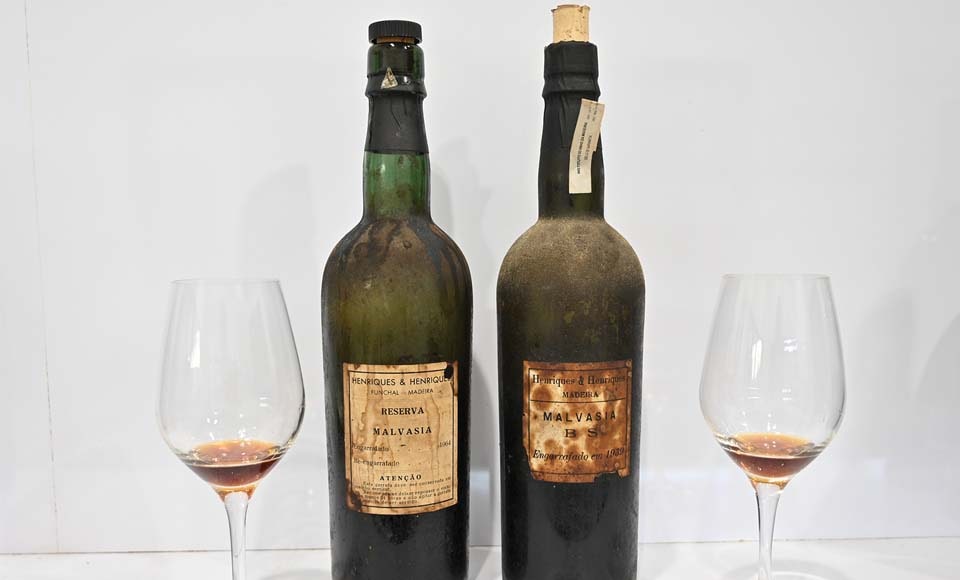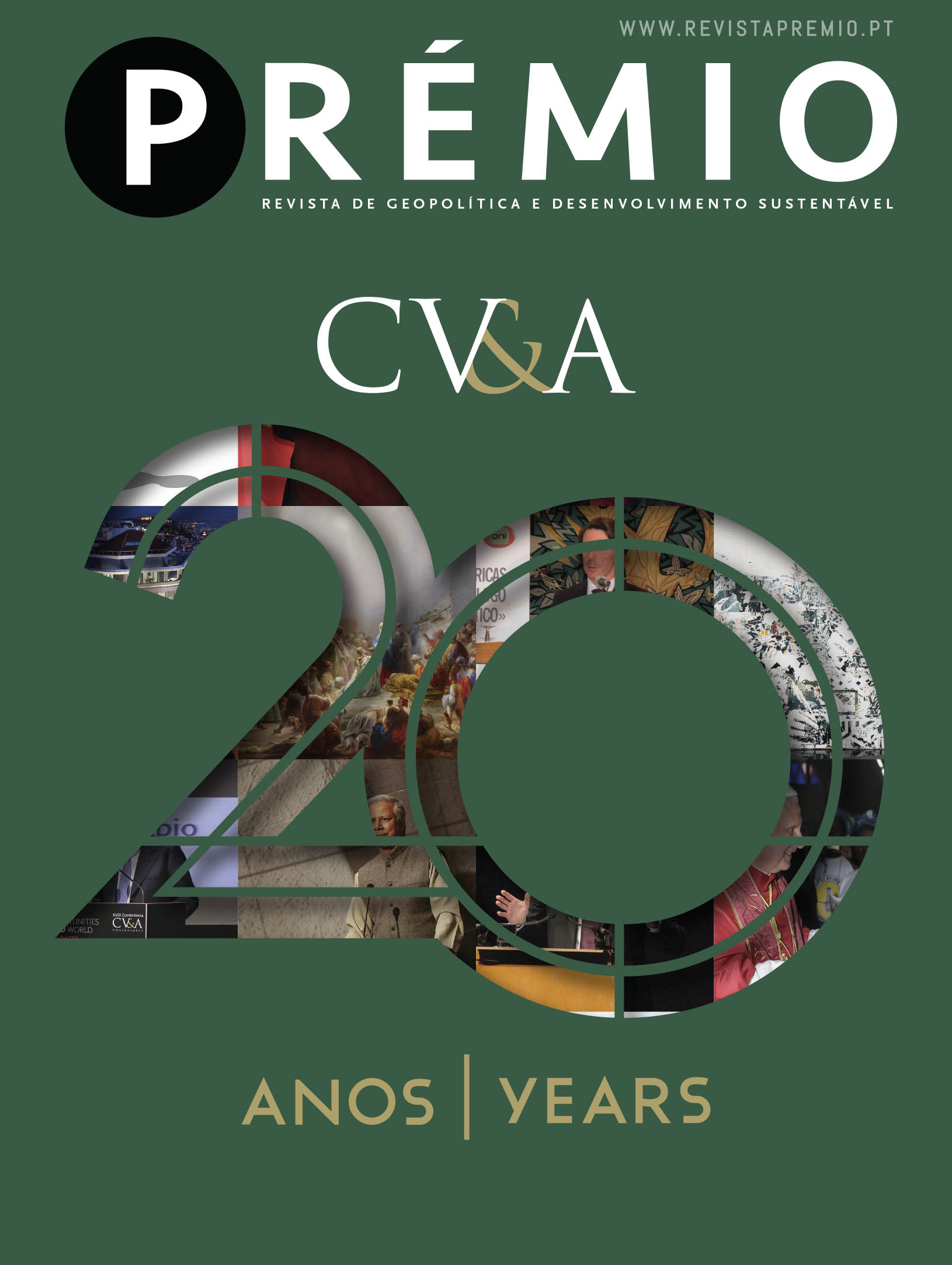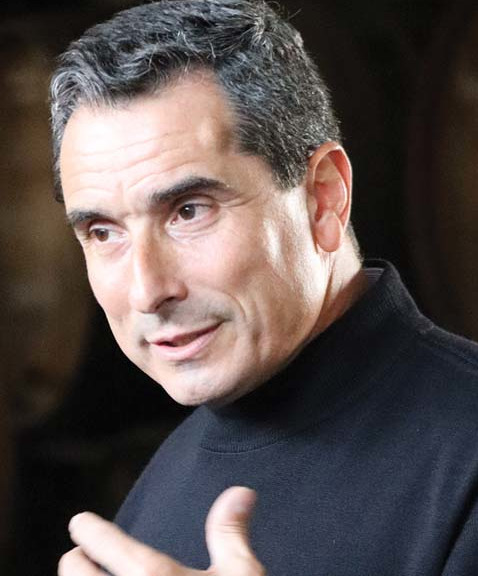Ana Valado
The fortified wine, madeira, is one of the calling-cards of the Portuguese island that gave the wine its name back in 1450. Appreciated down through history by figures such as Napoleon, Shakespeare and Churchill, madeira has become a symbol of distinction and nobility all around the world.
PRÉMIO went to meet one of the oldest and most prestigious estates producing and selling this fortified wine, H&H.
Located in Câmara de Lobos, just a few kilometres from Funchal, there is Henriques & Henriques (H&H), one of the oldest and most prestigious estates producing and selling madeira.
Throughout many years, the Henriques family was the largest grape producer on the island of Madeira, with the first vines planted on the orders of Prince Henry the Navigator in 1425. The family tradition became a company in 1850, founded by João Gonçalo Henriques. Following his death in 1912, a company was set up by two of his sons, Francisco Eduardo and João Joaquim Henriques, under the name that the company has retained through to current times, Henriques & Henriques.
In 1938, the then main shareholder, João Joaquim Henriques, generally known as “João de Belém”, opened up the company with Alberto Jardim, Carlos Nunes Pereira and Peter Cossart acquiring stakes.
In addition to producing and exporting, H&H stands out as the unique grower of certain very specific regional vines and that bring about grapes of extremely high quality, especially the Verdelho, and also Terrantez, which is noted for being an extremely sensitive grape and generally with very poor yields but able to produce some of the finest of wines and a particular delight when transformed into Madeira.
Despite its own level of production, H&H also needs to buy in grapes from various other growers with whom there have been close and ongoing relationships for many years.
In June 1992, major investment was put into constructing new installations in Câmara de Lobos as well as a wine making centre in Quinta Grande, enabling the company to deploy the most recent technological innovations even while maintaining the family tradition coupled with the planting of new vines in 1995. This vineyard, covering around 10 hectares in total, represents the largest continuous vineyard on the island as well as now being the first on Madeira to be mechanically tended.
In 2010, the French spirit multinational La Martiniquaise, which also owns the brands Gran Cruz (a giant in the world of port) and Justino’s (the largest producer of madeira), became a majority stakeholder in H&H, and assuming control of around 70% of the total output of madeira, while retaining Humberto Jardim as the CEO in keeping with his company management qualification and almost 27 years of accumulated experience at H&H.
It was exactly Humberto Jardim, the main guardian of the house since 2008, who took us on a tour of Henriques & Henriques, highlighting how despite the entrance of the French multinational into the capital, “H&H maintains substantial autonomy and preserves its own position, seeking in the group to leverage its expansion and growth at the internal level through investment in raising capacity, in readjusting and modernising techniques, in taking advantage of synergies with significant rationalisation of costs and as well as professionalised interventions in the company’s wine growing properties having endowed another dimension and external level of recognition to H&H.”
The H&H wines gain recognition worldwide as classical and very high quality madeiras. In addition to the broad range of wines in production, the company also maintains some extremely old wines of unrivalled qualities, highly sought after by collectors from all around the globe.
As Humberto Jardim explained, “in years we consider normal, 80% of our production goes to exports” before adding that “while madeira can be found almost anywhere in the world, the European countries that import the most madeira are the United Kingdom, France, Germany, Denmark, Sweden, Belgium and the Netherlands while, outside of Europe, it is the United States, Canada, Japan and, more recently, China”.


H&H produces and retails madeira in various different categories ranging from the entrance into this product, with only three years of ageing before heading onto many other versions differing in their lengths of maturity across 5, 10, 15, 20 and 50 years. “We produce wines from the different grapes authorised for fortified madeira, such as Malvasia, Boal, Verdelho, Sercial and Terrantez, wines with their own years of harvest, others that classify as old or very old vintages”, our host detailed. He then added that “the variety most disseminated is the Tinta Negra which produces about 85% of madeira. The varieties mentioned above, the whites account for around 15% of production”.
H&H runs two wine cellars with one located in Câmara de Lobos running wine tasting in the store and guided tours of the ageing centre. The other, for production and wine-making on Quinta Grande, also provides guided tours of the installations and vineyards as well as organised group events and lunches whether for incentive packages or for wine lovers.







